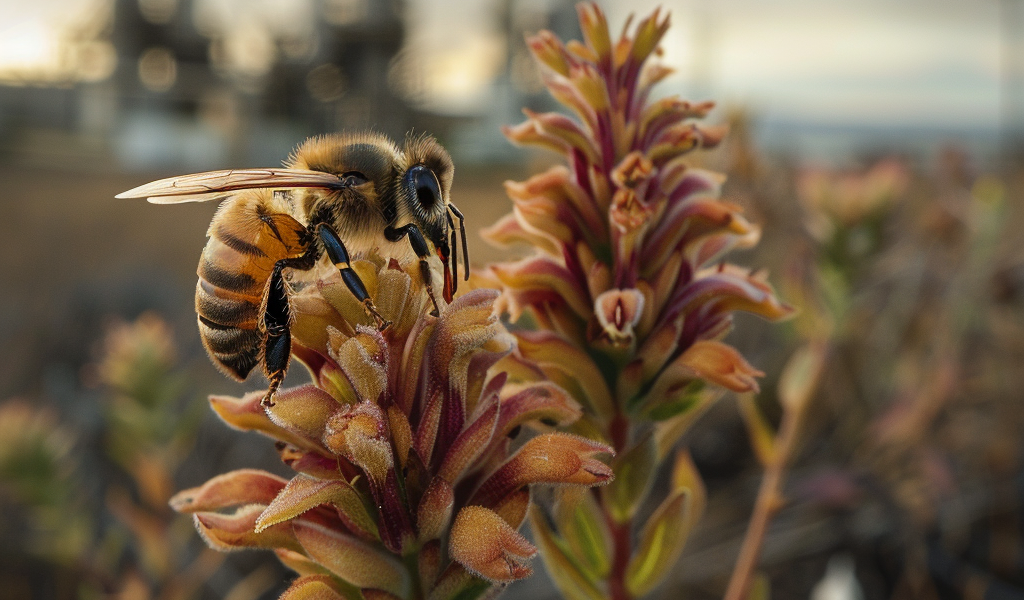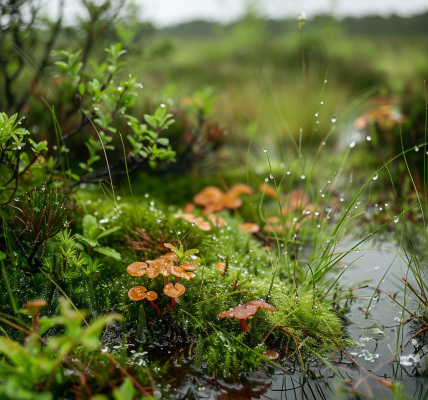Honeybees are emerging as unexpected allies in the fight against pollution in Canada, with their ability to gather environmental data proving invaluable. With over 13,000 beekeepers managing nearly one million beehives across the country, the potential for honeybees to assist in pollution monitoring is substantial. Each year, these beekeepers produce approximately 40 million kilograms of honey, equating to about one kilogram for every Canadian citizen.
As honeybees forage for nectar, pollen, and water, they inadvertently collect traces of chemicals present in their environment. The flowers they visit absorb various substances from the soil and water, which can include pollutants. Moreover, while flying, honeybees pick up dust and microscopic particles from the air and surfaces, which may contain metals and other pollutants resulting from human activities such as industrial processes and fossil fuel combustion.
By the time a honeybee returns to its hive, it is laden with the chemical signatures of its surroundings. The honey produced becomes a composite of everything gathered within a radius of approximately three kilometers, providing a unique insight into the local environmental conditions. Analyzing the chemical composition of honey can offer crucial information about the presence of pollutants in various ecosystems.
Recent research conducted by a collaborative team from Dalhousie University in Canada and the University of Manchester in the United Kingdom has focused on utilizing honey as an indicator of local pollution levels. The study, which concentrated on the Greater Manchester area, sought to measure metal concentrations in honey samples collected by citizen scientist beekeepers.
Historically, Greater Manchester was a hub of industrial activity, and the remnants of this past have left a legacy of pollution. Contaminants from historical industrial practices often persist in the environment, and they can be reintroduced into the ecosystem through activities such as construction and agriculture. Additionally, metals that have settled in soil and water can be absorbed by plants and subsequently transferred to flowers.
In this innovative study, local beekeepers contributed honey samples over a single season to establish baseline concentrations of metal pollutants across various zoning districts, including urban, industrial, residential, and agricultural areas. This baseline data is essential for future monitoring efforts, allowing researchers to track long-term trends and changes in metal concentrations within the environment.
The findings from this research highlight the potential of honeybees not only as pollinators but also as bioindicators of environmental health. By leveraging the natural foraging behavior of honeybees, scientists can gain insights into the chemical makeup of different regions, assisting in the identification and monitoring of pollution hotspots.
As the world grapples with increasing environmental challenges, the role of honeybees in pollution monitoring could become a vital tool in safeguarding ecosystems and public health. The use of honey as a medium for environmental data collection represents a promising avenue for future research and community engagement in environmental stewardship.
With the ongoing collaboration between researchers and citizen scientists, the potential for honeybees to contribute to our understanding of environmental pollution continues to grow. This innovative approach not only emphasizes the importance of honeybees in our ecosystems but also fosters a deeper connection between communities and their local environments.
As the research progresses, further studies will aim to refine the methodologies used in analyzing honey samples and expand the geographic scope of the investigations. By harnessing the natural behaviors of honeybees, scientists hope to create a comprehensive picture of pollution levels across various landscapes in Canada and beyond.
In conclusion, honeybees are proving to be invaluable partners in the quest for cleaner environments. Their ability to gather and reflect the chemical composition of their surroundings opens new avenues for understanding and addressing pollution. As we continue to explore the capabilities of these remarkable insects, the integration of honey as an environmental monitoring tool could revolutionize our approach to tackling pollution and preserving the health of our planet.





